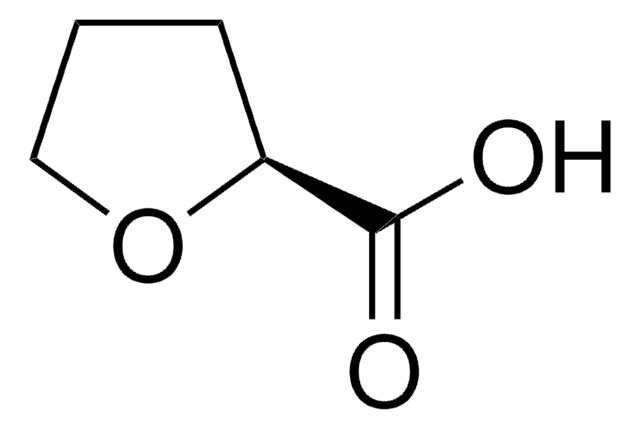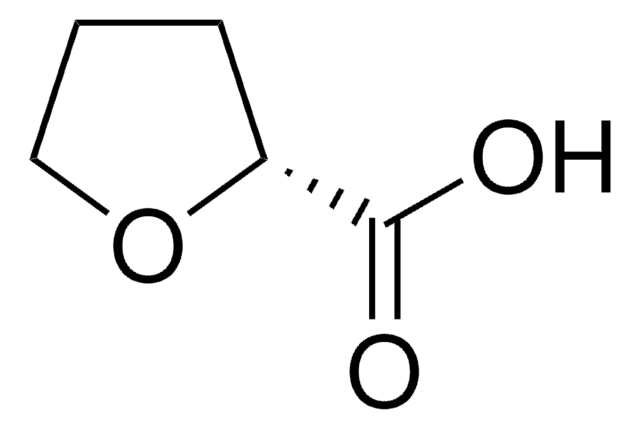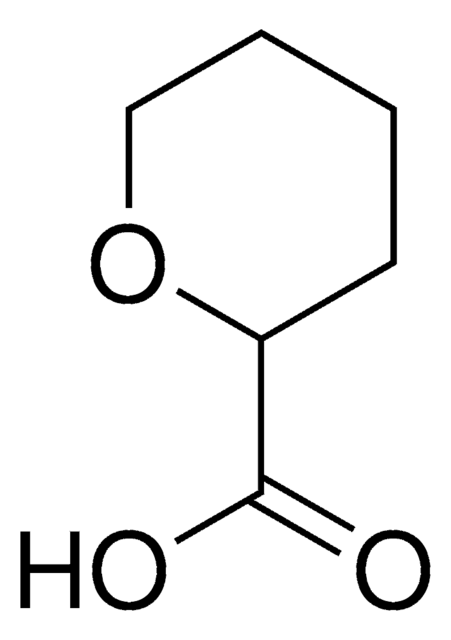The solubility of Tetrahydro-2-furoic acid in water is reported as 27.9 mg/ml or 0.24 mol/l.
341517
Tetrahydro-2-furoic acid
97%
Synonyme(s) :
Tetrahydrofuran-2-carboxylic acid
About This Item
Produits recommandés
Essai
97%
Forme
liquid
Contient
250 ppm BHT as inhibitor
Indice de réfraction
n20/D 1.46 (lit.)
pb
128-129 °C/13 mmHg (lit.)
237-243 °C (lit.)
Densité
1.209 g/mL at 25 °C (lit.)
Groupe fonctionnel
carboxylic acid
ether
Chaîne SMILES
OC(=O)C1CCCO1
InChI
1S/C5H8O3/c6-5(7)4-2-1-3-8-4/h4H,1-3H2,(H,6,7)
Clé InChI
UJJLJRQIPMGXEZ-UHFFFAOYSA-N
Vous recherchez des produits similaires ? Visite Guide de comparaison des produits
Mention d'avertissement
Danger
Mentions de danger
Conseils de prudence
Classification des risques
Skin Corr. 1B
Code de la classe de stockage
8A - Combustible corrosive hazardous materials
Classe de danger pour l'eau (WGK)
WGK 3
Point d'éclair (°F)
235.4 °F - closed cup
Point d'éclair (°C)
113 °C - closed cup
Équipement de protection individuelle
Faceshields, Gloves, Goggles, type ABEK (EN14387) respirator filter
Faites votre choix parmi les versions les plus récentes :
Déjà en possession de ce produit ?
Retrouvez la documentation relative aux produits que vous avez récemment achetés dans la Bibliothèque de documents.
Les clients ont également consulté
-
What is the solubility of item 341517, Tetrahydro-2-furoic acid, from Sigma-Aldrich, in water?
1 réponse-
Utile ?
-
Filtres actifs
Notre équipe de scientifiques dispose d'une expérience dans tous les secteurs de la recherche, notamment en sciences de la vie, science des matériaux, synthèse chimique, chromatographie, analyse et dans de nombreux autres domaines..
Contacter notre Service technique











